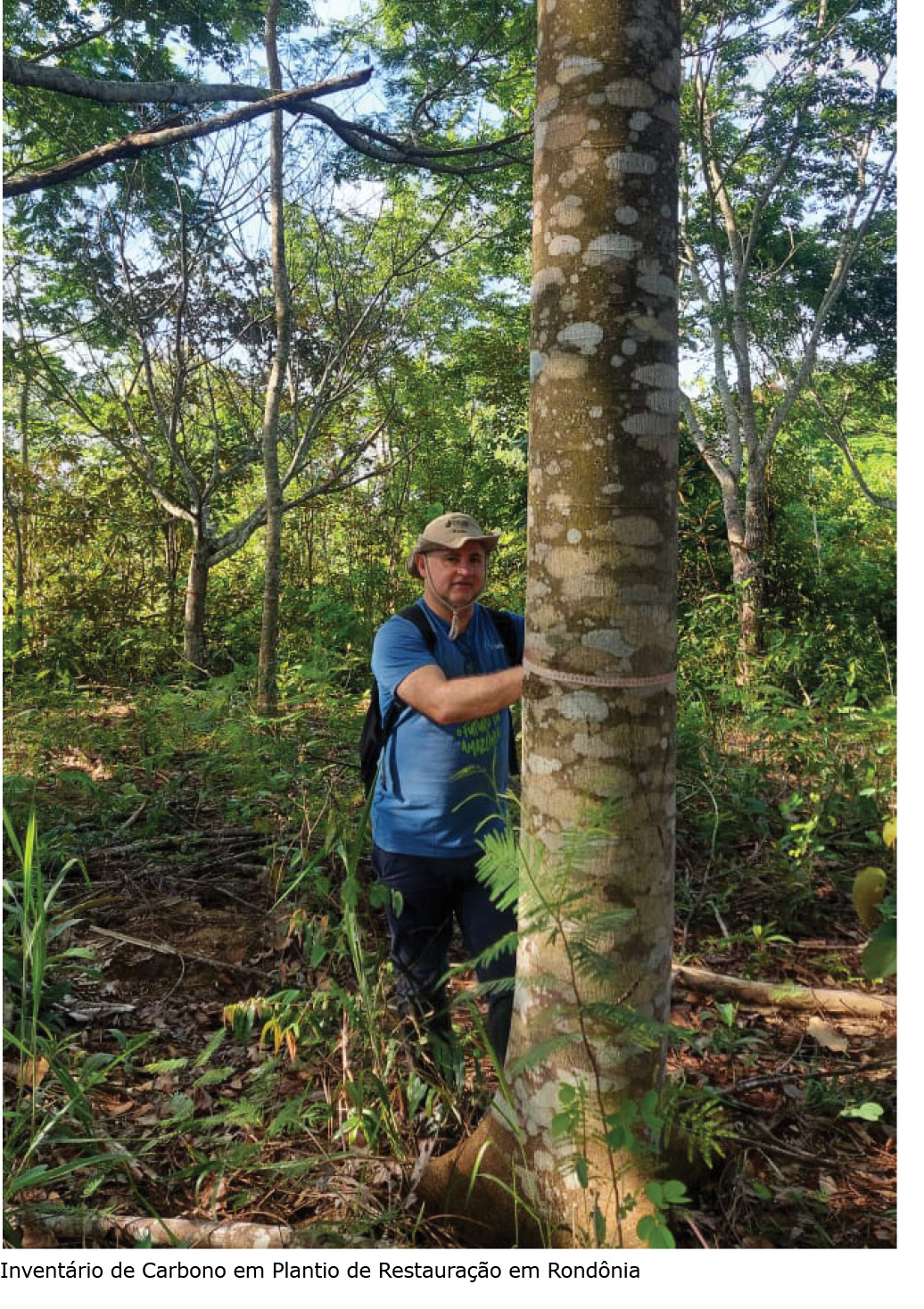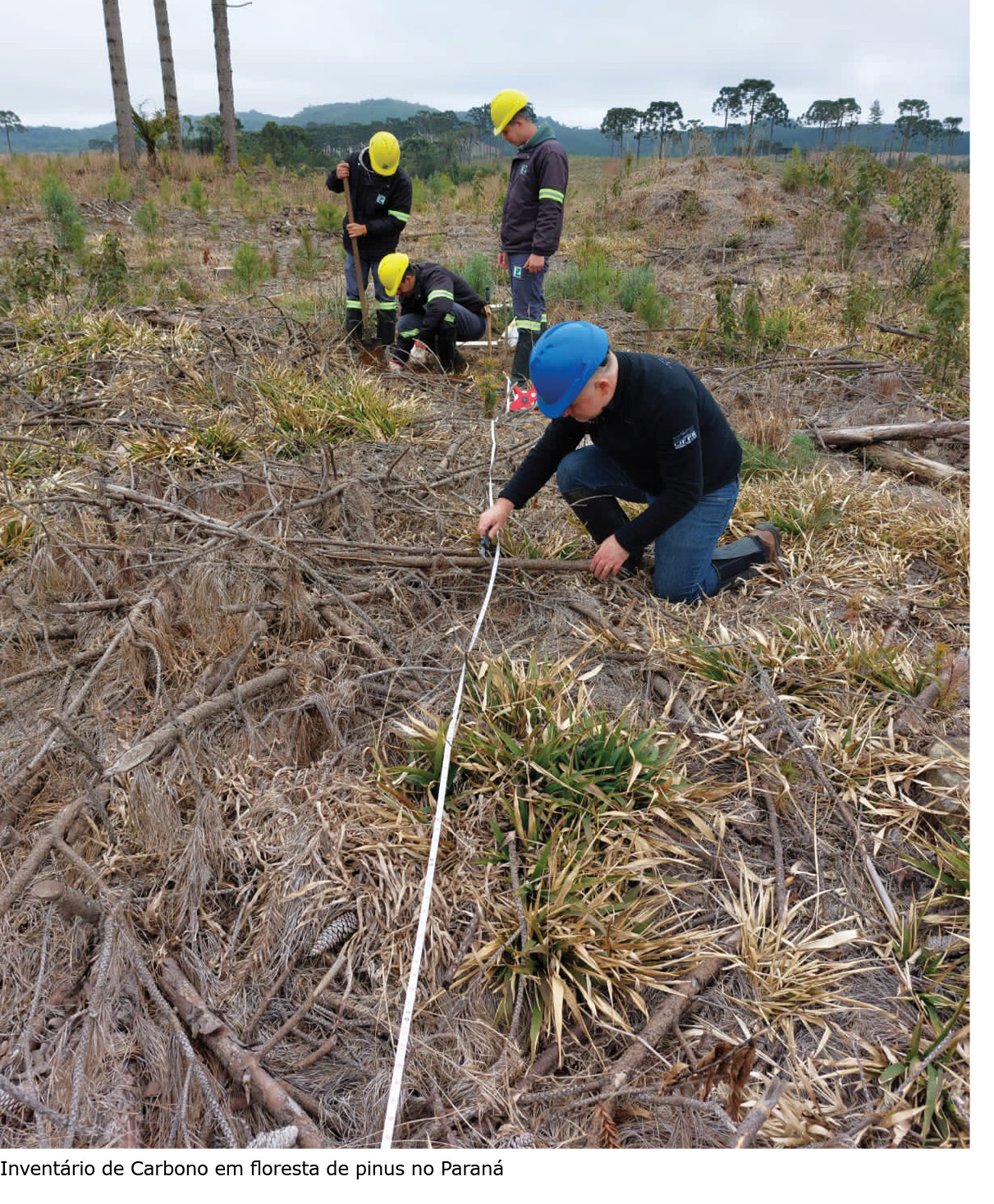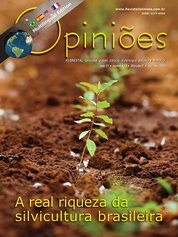Carlos Roberto Sanquetta
Professor e Pesquisador da UF-PR e do Centro BIOFIX
OpCP74
O mercado de carbono no sistema florestal
As mudanças climáticas representam uma das maiores ameaças ao futuro do nosso planeta e, por isso, a sociedade tem exigido que ações urgentes e efetivas para a redução da concentração de Gases de Efeito Estufa (GEE) na atmosfera sejam tomadas por governos e pela iniciativa privada.
As tratativas e acordos internacionais, entabulados desde a Convenção-Quadro da ONU sobre Mudanças Climáticas, ratificada em 1994, e o Protocolo de Quioto, ratificado em 2004, e por último, no Acordo de Paris, ratificado em 2015, criaram os instrumentos legais e regulatórios indispensáveis para promover a transição para uma sociedade de baixo carbono.
Esses acordos, também, criaram mecanismos mercadológicos inovadores para incentivar financeiramente os empreendedores que promovam a redução de emissões de GEE ou a remoção do CO2 já emitido para a atmosfera.
No Protocolo de Quioto havia três mecanismos de mercado de carbono: o Comércio de Emissões, a Implementação Conjunta e o Mecanismo de Desenvolvimento Limpo, o MDL. Os dois primeiros mecanismos foram criados apenas para os 39 países desenvolvidos (chamados de Anexo I), que tinham metas obrigatórias a cumprir, mas eles suplementarmente poderiam adquirir créditos de carbono dos demais países (não-Anexo I), como o Brasil.
 Isso oportunizou o desenvolvimento, o registro e a execução de mais de 8 mil projetos de redução e remoção de GEE em todo o mundo até o ano de 2020. O Brasil foi o terceiro maior gerador de créditos nesse “mercado regulado de carbono”, ficando atrás apenas da China e Índia. Muitos projetos saíram do papel e trouxeram contribuição à mitigação climática e ao desenvolvimento sustentável, além de captar recursos financeiros importantes com a venda dos créditos de carbono, chamados no MDL de RCE – Reduções Certificadas de Emissões, ou CER – Certified Emission Reduction. O mercado regulado global de carbono chegou a movimentar cerca de 200 bilhões de dólares por ano no auge do período de vigência do Protocolo de Quioto.
Isso oportunizou o desenvolvimento, o registro e a execução de mais de 8 mil projetos de redução e remoção de GEE em todo o mundo até o ano de 2020. O Brasil foi o terceiro maior gerador de créditos nesse “mercado regulado de carbono”, ficando atrás apenas da China e Índia. Muitos projetos saíram do papel e trouxeram contribuição à mitigação climática e ao desenvolvimento sustentável, além de captar recursos financeiros importantes com a venda dos créditos de carbono, chamados no MDL de RCE – Reduções Certificadas de Emissões, ou CER – Certified Emission Reduction. O mercado regulado global de carbono chegou a movimentar cerca de 200 bilhões de dólares por ano no auge do período de vigência do Protocolo de Quioto.Passada a experiência do MDL, os empreendedores brasileiros assimilaram que o nosso país tem um sem número de setores e atividades aptos a gerar créditos de carbono, trazendo oportunidades ambientais, econômicas, profissionais e tecnológicas. Eis, então, que eclode o chamado “mercado voluntário de carbono”, tendo em vista o hiato criado entre a passagem não muito suave do Protocolo de Quioto ao Acordo de Paris. Nesse mercado voluntário, não existem metas nem entes governamentais ou organizações internacionais, como a ONU, regulando o mercado. Ele é privado e reputacional, ou seja, as organizações desenvolvem projetos e geram créditos de carbono, livremente, em qualquer país, e podem vendê-los a outras organizações que desejam compensar as suas emissões.
O objetivo não é cumprir regulamentos, e sim, posicionar-se adequadamente junto aos seus stakeholders. Esse mercado é o que opera com maior vulto, hoje, em todo o mundo, inclusive no Brasil, um dos seus protagonistas.
Nesse momento, vivenciamos a iminência da criação do mercado regulado brasileiro de carbono, mediante a aprovação pelo Senado Federal do Projeto de Lei (PL) 412, que institui o Sistema Brasileiro de Comércio de Emissões de Gases de Efeito Estufa (SBCE) e dá outras providências. Nesse mercado nacional de carbono, os maiores emissores deverão calcular e reportar as suas emissões e remoções, bem como apresentar medidas de redução e compensação, transacionando créditos de carbono.
Mas e o sistema florestal como pode participar desse mercado nacional de carbono e, eventualmente, dos mercados regulados globais e do mercado voluntário de carbono?
Das mais variadas formas, desenvolvendo projetos e gerando créditos de carbono a serem consumidos pelos agentes que não conseguem reduzir as suas emissões de GEE, sejam elas reguladas pelos tratados internacionais, pela legislação brasileira, ou pelo mercado voluntário reputacional.
Para gerar créditos de carbono aptos ao mercado, o sistema florestal deve preconizar o desenvolvimento de projetos elegíveis, adicionais e de alta integridade. Eles devem promover benefícios reais, mensuráveis e de longo prazo, em comprometimento com a causa climática, além de promover outros co-benefícios sociais e ambientais, sobretudo às comunidades e à biodiversidade.
As tipologias de projetos mais relevantes para o mercado de carbono, na atualidade, são as chamadas NBS (Nature-Based Solutions), ou soluções baseadas na natureza, nas quais os projetos florestais se encaixam perfeitamente. Os projetos NBS, em contraponto aos projetos tecnológicos, como os energéticos, industriais e de resíduos, são altamente apreciados no mercado atualmente.
 Entre essas tipologias de projetos, algumas merecem destaque:
Entre essas tipologias de projetos, algumas merecem destaque:• REDD+ ou Redução das Emissões por Desmatamento de Degradação Florestal: trata-se da evitação de emissões de GEE pela conservação de uma área florestal, seu manejo e incremento nos estoques de carbono;
• ARR – Florestamento, Reflorestamento e Revegetação: é a regeneração de uma área desprovida de vegetação florestal, seja por plantio convencional com mudas ou outras formas de regeneração (incluindo regeneração natural assistida) com o objetivo de incrementar os estoques de carbono pelo crescimento das árvores, promovendo a “remoção biológica” de carbono;
• Removal: trata-se do crescimento da vegetação nativa conservada com o fito de manter a sua dinâmica de regeneração. A lógica nesse caso é diferente dos projetos REDD+, cujo cômputo dos créditos de carbono é feito pelo montante evitado de GEE pelo desmatamento evitado. No caso de “removal” ou remoção de CO2, a geração de créditos de carbono decorre do crescimento da floresta;
• Blue Carbon: também conhecido como carbono azul, que evita a emissão de GEE ou promove a remoção de CO2 em áreas úmidas, como manguezais, pantanais, etc.;
• Outros: existe uma ampla gama de outros projetos de carbono que podem ser desenvolvidos. Exemplos: sistemas consorciados (iLPF – Integração Lavoura-Pecuária-Floresta), substituição energética com biomassa, produção e aplicação de biochar (biocarvão), entre outros.
Enfim, o sistema florestal tem muitas oportunidades e um enorme potencial de contribuir com a mitigação climática, além de promover o bem-estar da humanidade, além, é claro, de gerar renda, empregos e divisas. Mais do que isso, o sistema florestal, mediante sua atuação no mercado de carbono, tem papel crucial de promover a sustentabilidade no longo prazo e, assim, a própria sobrevivência da humanidade.
Cabe, então, ao sistema florestal atuar, de forma incisiva, nesse enorme mercado que se configura. Os profissionais, as empresas e o terceiro setor que atuam com florestas têm uma oportunidade de ouro em suas mãos. Conquistar esse espaço é uma questão de se apropriar dessas oportunidades, transformando-as em abertura de novas frentes de negócios para o sistema florestal, sem fazer distinção entre florestas plantadas e nativas, florestas de produção de madeira (ou outros produtos) e para proteção ambiental.
Existem oportunidades para todos.




